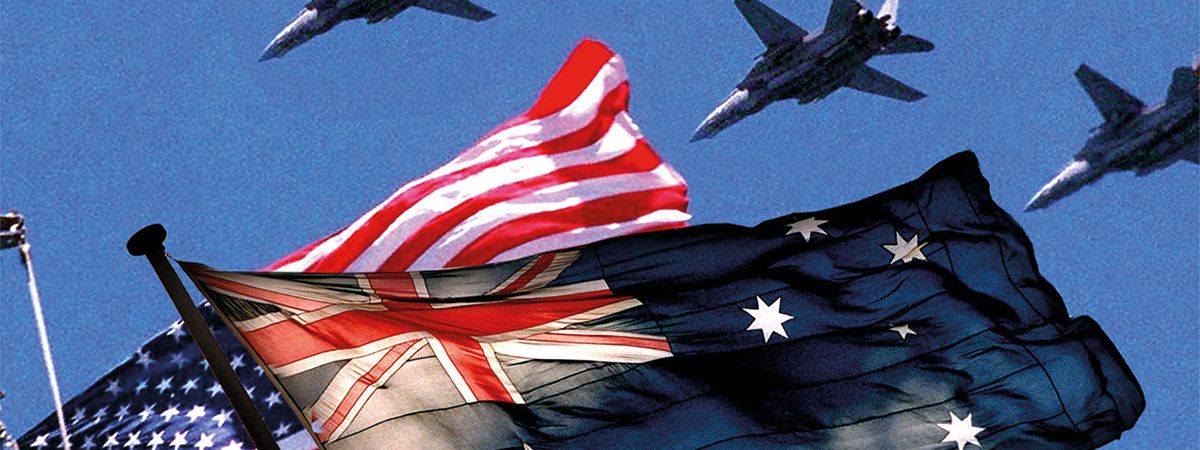
FIRING LINE
Correspondence
James Brown’s Firing Line fills a real gap in Australian public debate. He draws attention compellingly to the poor state of understanding of how and why Australia decides to use force to protect and advance its interests. Brown brings home to us the realities of international security, in a fitting sequel to his book Anzac’s Long Shadow, which identified the contradiction between many Australians’ obsession with a stylised military history and their relative indifference to today’s defence force. He warns that our nation has barely begun to think hard about the war-and-peace decisions that loom in the difficult decades ahead. War is not obsolete and, in an uncertain, complex and connected world, no island is an island. Australia cannot and should not be a bystander.
On all these counts Brown is right, and has done Australia a service. But what is also needed is a set of guidelines to help us make the best decisions in the national interest. How much danger and responsibility should Australia be willing to countenance when contributing to the international struggle against jihadist terrorism, which attacks the trust and tolerance underpinning our society? How important, by comparison, are inter-state security challenges (which are almost entirely posed by the rise of China and the resurgence of Russia)? Ultimately, what risks and costs should Australia be willing to incur to discourage armed coercion in the Asian strategic order, including in the South China Sea? In an Australia where political views and perceptions of national interest are becoming increasingly fragmented – an Australia that is a mosaic of more people from more places and backgrounds than ever before – it is becoming ever harder for a government to find effective policy answers to these questions, or to mobil-ise and maintain public support when it does.
To be fair, to address these questions fully would require a longer format – after all, a signature quality of the Quarterly Essay is its capacity to make us ask the difficult questions, rather than to claim to have all the answers.
Two other observations: one about the education of our political class, the other about the nature of conflict. A theme of the essay – and, indeed, of some of Brown’s previous work, including reports he and I co-authored for the Lowy Institute – is the often troublingly low awareness of security issues among parliamentarians. Brown commendably proposes a much more comprehensive range of parliamentary committees on security matters, but our political representatives would not want to go into them cold.
Thus, he also notes that institutions such as the Australian National University can help equip our political class to think about security – and certainly I would be happy for my own part of ANU, the National Security College, to step up in that regard. This means more than briefings and courses for parliamentarians (as rightly recommended by Peter Leahy). Equally important is the need to ground the procession of political staffers in the realities of defence, security and the national interest.
Brown sensibly points out that the nature of conflict is changing rapidly. While the threat of force has resurfaced in international affairs – in truth, it never went away – it would be a mistake to expend great effort to prepare the Australian public and political elite only for conflicts that echo those of the past. Brown focuses especially on the astounding changes in technology which should alert us against investing overwhelmingly in, say, submarines and warships: space, cyber, “swarming weaponised drones,” shape-changing objects from 4D (yes, 4D) printing, changes in biologics and nanoscience.
What is also changing profoundly is the nature of conflict and the scenarios in which Australia may need to use its security capabilities – and not only the armed forces. Put simply, the barriers between international and domestic security, and between security and economics, are breaking down. We are seeing a nexus of domestic and international threats; of risks that simultaneously confront government, private and community interests. These challenges – from terrorism to cyber infiltration to potentially harmful geo-economic influence – place a new premium on partnerships. And some of those problems will need to be met on Australian soil, involving new roles for the Australian Defence Force.
Australia’s security is no longer a problem for the Commonwealth government alone: it will necessitate cooperation with the states and territories, with business, with the many cultures of the Australian community, and with international partners. These are all reasons for a broader national conversation about security, to which Firing Line is a valuable contribution.
Rory Medcalf
Rory Medcalf is Head of the National Security College at the Australian National University. Formerly, he led the international security program for the Lowy Institute. He was on the independent expert panel for the 2016 Defence White Paper.
CONTINUE READING
This is a reply to James Brown’s Quarterly Essay, Firing Line: Australia's Path to War. To read the full essay, login, subscribe, or buy the book.
ALSO FROM QUARTERLY ESSAY










